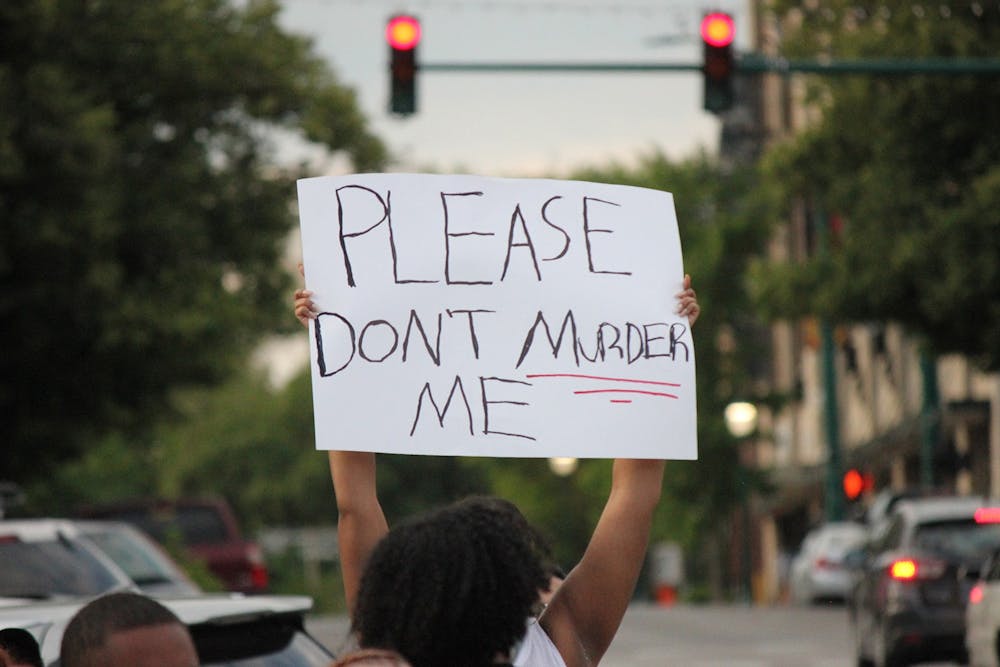Editor's note: After further staff discussion this letter was edited to better reflect our policies. This article was republished at 6:42 p.m. June 2 to reflect these changes.
Yesterday I made the decision to take down any photos and video that exposed the face or any identifying characteristic of a protester from our coverage in Bloomington and Indianapolis during protests over the killing of George Floyd by Minneapolis police May 25. The decision to let these run in affiliation with the Indiana Daily Student was mine, and I take full responsibility for it.
The decision to avoid photographing identifying characteristics as best we can for these protests is one that I will stick by for the remainder of my time as editor-in-chief. In the case of an exceptional event too newsworthy to not run a picture of, our editors will carefully discuss how to handle that situation.
We will continue to cover these protests because these stories need to be told, but there is a way to do that while minimizing harm. A dialogue on how we move forward in our coverage is ongoing.
Normally in a situation like this, we would fix the problem and leave up any content that was previously published. However, in this case I feel there is a middle ground between complete erasure and leaving up pictures that may cause harm to the people featured in them.
There is growing concern over the well-being of protesters in these spaces. Six of the most prominent activists from the Ferguson protests are dead, and it has been speculated that they were targeted for their publicized involvement within the Black Lives Matter movement.
Some may say that if a protester doesn’t want a picture taken, they shouldn’t attend a public protest. But we have to take into account the power of technology and social media to track and identify people, which has grown exponentially in recent years.
How we as journalists cover these protests is an ongoing discussion, but right now as a human being I think we have an obligation to protect others from potential harm. Our protest coverage from the weekend will not be gone — our photographers took plenty of photos that meet these guidelines, so taking down these photos does not completely erase the work done by our team this weekend.
The Society of Professional Journalists Code of Ethics has a section dedicated to minimizing harm. Reporters are directed to balance the need to inform the public with preventing harm to those we cover. “Pursuit of the news is not a license for arrogance or undue intrusiveness,” the guidelines read.
Editorial judgment must be used in balancing this guideline with seek truth and report it, which is something I took into account in making this decision.
There is no exact formula to find this balance, so our judgment as journalists decides how we go about it. Everything we publish, especially something that may cause harm, requires a certain amount of due diligence and consideration before we publish it for our readers.
Monday night, the IDS published its first batch of photos after I announced this new policy. IDS photographer Claire Livingston took photos at yesterday's Bloomington protest, and I think her work shows that photos can be impactful while not potentially facilitating harm to anyone.
I don't know what this means for coverage of protests beyond this moment or outside of this movement, and I would love to hear your thoughts.
At the end of the day, the IDS is a learning lab for journalists, and I am surrounded by an amazing staff of people who helped me reach this decision.
If you would like to voice any concerns, you can email me at editor@idsnews.com or submit a letter to the editor. As always, thanks for reading.



